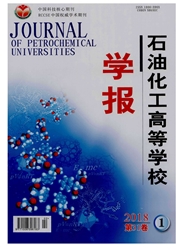

 中文摘要:
中文摘要:
对原油储罐内壁的铁锈试样进行X射线衍射分析表明,储罐内铁锈的主要成分为Fe3O4(质量分数为27.8%)、F23O3(质量分数为61.5%)和Fe(OH)3(质量分数为10,7%)。模拟储油罐内壁铁锈和硫化氢的反应,改变硫化温度和实验样品的相对湿度,通过硫化物在氧化过程中温度的变化,考察硫化产物的自然氧化倾向。结果表明,干燥或相对湿度大于20%的实验样品硫化反应所生成的硫化产物自然氧化性大幅度降低,氧化速度缓慢,对储罐安全构成的威胁性较小。
 英文摘要:
英文摘要:
The rust of oil tank inner wall was analyzed by XRD. The result shows that the main composition of rest is Fe3O4, Fe2O3, Fe(OH)3 with mass fraction of 27.8% ,61.5%, 10.7%, respectively. The reaction between rust of oil tank inner wall and H2S was simulated with different relative humidity at different temperature. The oxidation tendency of sulfide was investigated by changing oxidation temperature. The results show thai the oxidation tendency of sulfide formed under the condition with relative humidity of 0 or above 20 % greatly decreases, the oxidation rate is low and there is no risk to the safe running of oil tans.
 同期刊论文项目
同期刊论文项目
 同项目期刊论文
同项目期刊论文
 期刊信息
期刊信息
